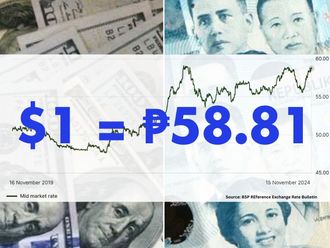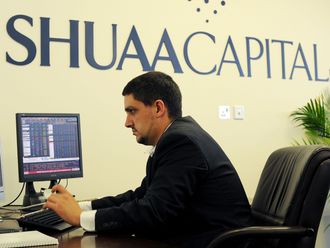Milan: Italy’s “war” with international debt markets has sent borrowing costs soaring for its traditionally prudently managed private companies, stifling their efforts to invest in competing more strongly with rivals in Germany and beyond.
Just as Prime Minister Mario Monti tries to fix the problems that have hindered Italy’s private sector for decades, notably its legendary official red tape, companies are paying significantly more to borrow than competitors to the north.
The European Central Bank has slashed its interest rates and showered banks with cheap cash in the hope they will lend to companies and consumers in the struggling southern nations such as Italy, which have been worst hit by the Eurozone crisis.
But at the same time, a jump in Italy’s borrowing costs on the sovereign bond market has dragged up interest rates on bank loans to Italian industry.
“We used to be able to borrow at 2.5-3 per cent. But since this war of the sovereign bond spreads began, things have changed dramatically,” said Paolo Bastianello, Chairman of textiles group Marly’s. “The cost of credit has certainly risen by a couple of percentage points.”
Marly’s is the kind of Italian manufacturer that typically competes strongly on international markets, making high-end women’s clothes under its own label and for top fashion brands such as Carlo Pignatelli and Kathleen Madden.
A company with annual sales of 16.5 million euros, Marly’s is based near the historic city of Vicenza in the Veneto, a region thick with small and medium-sized companies (SMEs) which have long exported goods and components to the huge German market across the Alps.
Even though the ECB’s benchmark rate has fallen to a record low 0.75 per cent, the cost of corporate credit in Italy now reflects more the general risk associated with the state and the cost of sustaining its mammoth 2 trillion debt.
Italy’s conservative companies, which have avoided taking on the huge debt burdens typical in the Anglo-Saxon world and fellow Eurozone struggler Spain, are paying the price for a state debt equal to 120 per cent of annual economic output.
At 81 per cent of gross domestic product, total net indebtedness of Italian non-financial companies is significantly lower than in Britain, France and Spain, although slightly higher than in Germany, according to Bank of Italy data.
But Italian firms rely on banks for 70 per cent of their financial debt, a higher share than the European average. This makes them dependent on banks’ lending policies and vulnerable to domestic economic developments.
ECB data released on Wednesday showed that companies in Italy paid on average a 4.57 per cent interest rate in June for short-term loans of up to one million euros. This compares with just 3.37 per cent paid by their German competitors and is half a percentage point higher than the Eurozone average.
Yet 18 months ago, before being engulfed in the Eurozone crisis, Italian companies could get small short-term loans at 3.22 per cent, below the euro average and Germany, ECB data show.
FALLING FOUL
Companies from the largest corporations to the smallest family businesses have now fallen foul of the rule that private borrowers must be a greater credit risk than the governments of the country where they are based.
Italian firms, like many around Europe, have long found it hard to match their German competitors’ high productivity. But if they borrow now to fund productivity improvements, their disadvantage simply grows.
“To the extent that Italian SMEs are competing with Germany, they are having to confront a landscape that is not a level playing field any more. It’s significantly skewed against them,” said Sony Kapoor, who heads the economic think-thank Re-Define.
“But put yourself in the shoes of the banks: if you see that the Italian government is paying 6 per cent on its bonds, how can you then lend to someone more risky, an SME, at a lower rate?”
For loans with a maturity of five years or more, the cost for companies in Italy and Spain is now based on what their respective governments are paying to sell equivalent debt.
The interest rate on such corporate loans is averaging 6 per cent in Italy and 6.5 per cent in Spain - where the government is struggling to avoid joining Greece, Ireland, Portugal and Cyprus in taking a full state bailout - against a mere 3.5 per cent in Germany, according to Goldman Sachs.
“The influence of official ECB rates on retail interest rates in Italy and Spain has diminished while it has increased in Germany and France,” said Goldman Sachs’ Natacha Valla.
“While Italian and Spanish households and non-financial corporations are facing sharp increases in the rates they are charged by their banks, their German counterparts have been borrowing at rates declining in line with official rates.”
Changes in official ECB rates traditionally feed through to the cost of bank loans via the corporate bond market, a preserve of the biggest private sector borrowers, but this is no longer true in the weaker Eurozone members.
The competitive difference is felt also by the corporate giants. Italian utility Enel, which has the same credit rating as its German counterpart RWE, pays nearly 336 basis points over swap interest rates for its 2018 bond - giving a current yield of about 4.55 per cent.
By contrast, RWE’s 2018 bond trades at just 36 basis points over swap rates, giving a yield of 1.56 per cent. Both companies have a BBB+ rating from Standard & Poor’s and an A- from Fitch.
The competitiveness effect is being felt throughout industry. Last week Fiat Chief Executive Sergio Marchionne, which is struggling against falling demand in Italy, attacked German-based rival Volkswagen for pursuing too aggressive a pricing strategy.
Borrowing inequality is affecting much of the Eurozone’s southern flank and has spread well beyond corporate loans. For instance, Spanish home buyers have to pay twice as much in interest for a mortgage loan than Finns.
RIVALS
Italy and Germany have traditionally been large trading partners as well as rivals in the business arena. Both countries enjoy a broad industrial base, with a strong manufacturing sector made up of thousands of SMEs.
Germany is Italy’s biggest export market. Italian firms sold goods there worth a record 49.4 billion euros last year, equivalent to 13 per cent of all exports. Italy’s imports from Germany were 62 billion euros, around 15 per cent of the total.
Companies from both countries also compete on third markets but the high cost of credit is hindering investment that Italian firms ought to be making to keep up with competition abroad.
Brass valves maker Enolgas, with sales of 30 million euros, is an example. Based near Brescia in Lombardy, Italy’s wealthiest and most industrialised region, the firm pressed on with investments through the financial crisis which began in 2008.
However, owner Sandro Bonomi, said Enolgas finally had to suspend them last year.
“With a crisis as acute as the current one, the focus for small Italian companies is on the short-term, on winning revolving credit to keep the operations going. This is at the expense of loans for investments,” he said.












